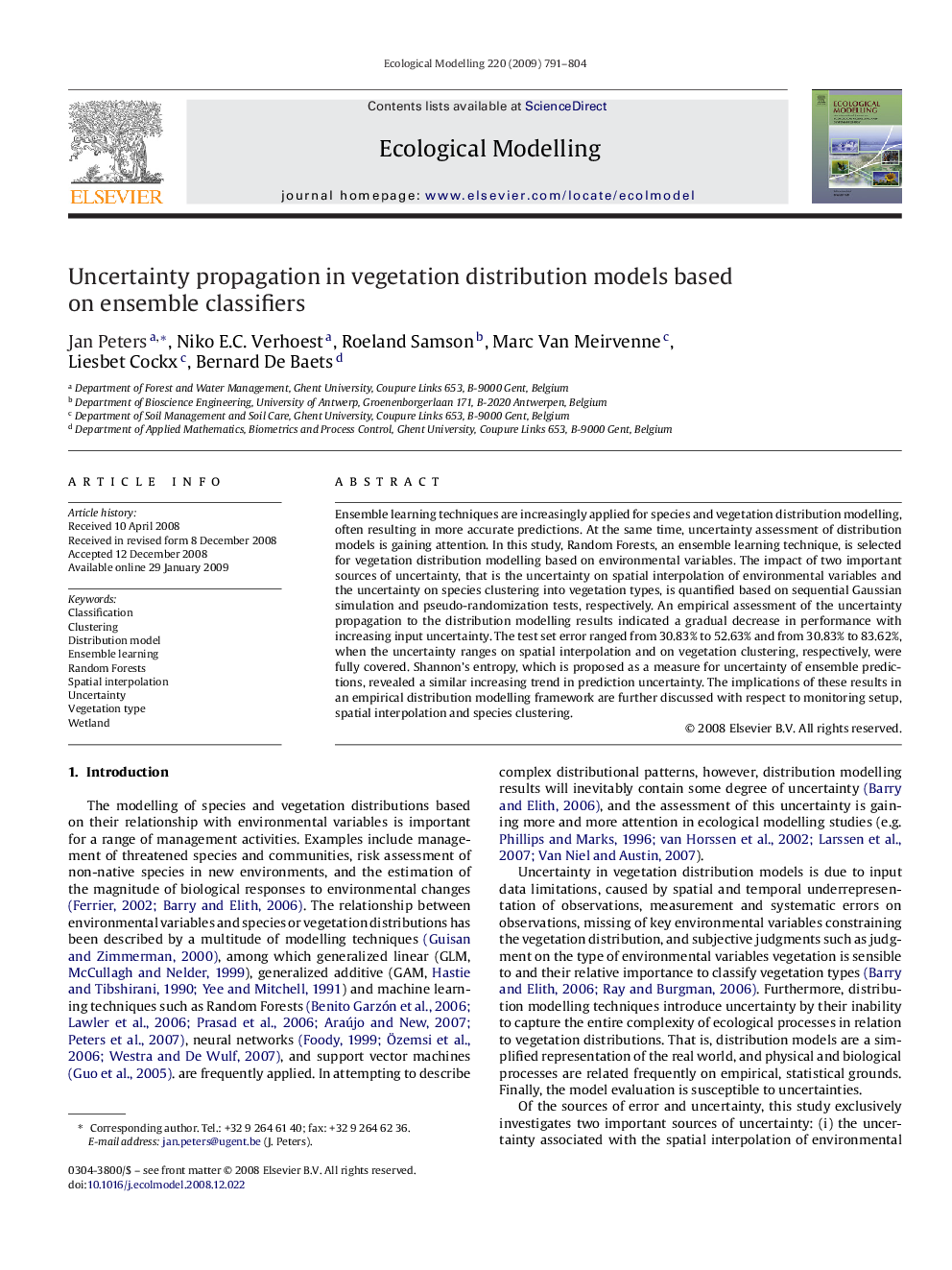| کد مقاله | کد نشریه | سال انتشار | مقاله انگلیسی | نسخه تمام متن |
|---|---|---|---|---|
| 4377908 | 1303452 | 2009 | 14 صفحه PDF | دانلود رایگان |

Ensemble learning techniques are increasingly applied for species and vegetation distribution modelling, often resulting in more accurate predictions. At the same time, uncertainty assessment of distribution models is gaining attention. In this study, Random Forests, an ensemble learning technique, is selected for vegetation distribution modelling based on environmental variables. The impact of two important sources of uncertainty, that is the uncertainty on spatial interpolation of environmental variables and the uncertainty on species clustering into vegetation types, is quantified based on sequential Gaussian simulation and pseudo-randomization tests, respectively. An empirical assessment of the uncertainty propagation to the distribution modelling results indicated a gradual decrease in performance with increasing input uncertainty. The test set error ranged from 30.83% to 52.63% and from 30.83% to 83.62%, when the uncertainty ranges on spatial interpolation and on vegetation clustering, respectively, were fully covered. Shannon’s entropy, which is proposed as a measure for uncertainty of ensemble predictions, revealed a similar increasing trend in prediction uncertainty. The implications of these results in an empirical distribution modelling framework are further discussed with respect to monitoring setup, spatial interpolation and species clustering.
Journal: Ecological Modelling - Volume 220, Issue 6, 24 March 2009, Pages 791–804